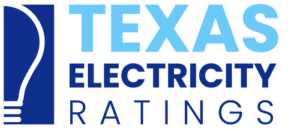So if you’ve read part one of my look into AEP’s application to sell retail electricity, you have an understanding of the rules that separate TDUs and REPs, as well as AEP’s place in the Texas electricity market. Now it is time to highlight why what AEP is doing is problematic for consumers. Let’s jump right in below.
Market Confusion for deregulated Texas Electricity
While there are many concerns about AEP getting into business as a REP, the main focus of this battle will be on whether or not letting AEP into the market will be confusing to customers. In other words, people might further misunderstand the roles of REPs and TDUs or customers might mistakenly think they don’t have electric choice. Some customers might even think that could receive worse service from AEP the TDU if they don’t order their service from AEP the REP. Does this seem far fetched? Well, it shouldn’t
Many of those fears were confirmed by a research survey AEP conducted to SUPPORT their application. In fact, the release of the survey results has created quite a stir in the electricity world, with many people writing different articles and commenting on the eye-opening results.
Here are some startling facts from the survey*:
- Less than 1/3 of all people surveyed understood that the company that maintains power lines isn’t the company that bills them each month.
- In all deregulated areas, nearly 75% or more of all people surveyed couldn’t correctly name their TDU
- 52% of all people in AEP service areas already believe AEP sells retail electricity.
So, in summation, less than 1/3 of people surveyed actually have an understanding about how the competitive electricity market works, less than 25% of the people in deregulated areas can correctly identify their TDU, and 52% of all customers in AEP service territories already believe that AEP sells retail electricity. I would say this is pretty definitive proof that Texans still don’t understand deregulated electricity. Additionally, I think it is strong evidence that allowing AEP to sell retail electricity would further add to market confusion.
AEP’s suggested Compromise
What is AEP’s response to any potential market confusion that might occur from them operating a TDU as well as a REP? It is to include this disclosure in the fine print of their advertisements, disclosures, and most importantly business cards:
AEP Retail Energy is not the same company as AEP Texas Central Company or AEP Texas North Company, which are sometimes referred to together as AEP Texas, and AEP Retail Energy is not regulated by the Public Utility Commission of Texas, and you do not have to buy AEP Retail Energy’s products to continue to receive quality regulated services from AEP Texas Central Company, AEP Texas North Company, or AEP Texas.
Additionally, AEP will cite the full company name in their Electricity Facts Labels (EFLs) as: AEP Texas Commercial & Industrial Retail Limited Partnership.
Remember earlier when it was mentioned that the two TDU divisions of AEP are commonly referred to as AEP Texas? Look at the first two words of what would appear on an EFL…that’s right, they are AEP and Texas, respectively. AEP Texas. AEP’s suggestion to eliminate confusion and create separation from AEP Texas and AEP Retail Energy is to list the extremely long company name on EFL fine print…the first two words of which are AEP and Texas.
As someone who works in this industry and is familiar with customer habits, believe me when I tell you that most people don’t even read their EFLs or fine print when they sign up for electricity plans. The notion that listing the full company name will make things perfectly clear to all customers is extremely unlikely. Add in the fact that the first two words of the long company name listed are AEP Texas and the idea that customers will completely disassociate AEP Energy Retail from AEP Texas becomes almost an impossibility. I would argue it strengthens the connection. I would also suggest that is exactly what AEP has in mind.
Ok, now that we’ve established that the concerns over market confusion are very real and take a look at the research and AEP’s proposed compromise, we can move forward. In the next section, I will take a much closer look at the potential confusion and the implications it could have for competition in the deregulated electricity market. We will also talk about who is opposing AEP in this hearing.
*For anyone interested in looking at the actual results of AEP’s survey, they can download a PDF of the file from this link.
